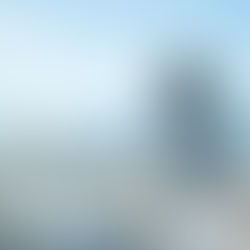Sun Safety

Contrary to popular belief, there is no such thing as a 'healthy tan'. When your skin is damaged by the sun, it produces more melanin (the pigment that gives skin its colour) to try to protect your skin from being damaged even more. Too much sun can cause sunburn, skin damage, eye damage, and skin cancer. High ultraviolet (UV) exposure in the first 10 years of life can double the risk of melanoma. UV can be high even in winter or when it is overcast. You can check the UV index with the free SunSmart app.
Now the sun is not all bad. Children need some sun to help their body make Vitamin D for things like healthy strong bones but this can be as little as 10-15 minutes per day.
So how best to protect your kids against the sun?
Sid the Seagull from SunSmart sums it up nicely with Slip, Slop, Slap, Seek and Slide.
Slip (into protective clothes)
Some stores sell sun protective clothing with an ultraviolet protection factor (UPF) rating 50+ which will provide the best UV protection. Look out for these labels, especially when buying swimwear and rash vests. The more you child’s skin is covered, the more protection it will provide. Loose cotton clothes are cooler than tight acrylic fibres.
Slop (on Sunscreen)
Use sunscreen that is labelled SPF 30+ and is water-resistant. Apply sunscreen generously at least 20 minutes before going outside and re-apply every 2 hours (even if the label says every 4 hours).
Sunscreens that are labelled ‘for babies’ or ‘sensitive’ are less likely to irritate your child’s skin. Always test sunscreen on a small area to check for a reaction. The Australian College of Dermatologists do not recommend the widespread use of sunscreen on infants less than 6 months old as their skin absorbs more of any chemicals used in sunscreens than in adults. Shade, hats, protective clothing are the best ways to protect their skin.
Slap (on a hat)
Hats help protect your child’s face, neck and ears from harmful UV rays. Broad-brimmed buckets hats or legionnaire’s hats provide the best protection. Many babies and toddlers don’t like wearing hats, but keep persisting, wear a hat yourself, and soon they will come to expect it as part of going outside.
Seek (the shade)
Ultraviolet (UV) radiation levels are usually highest between 9am and 4pm, depending on where you are in Australia and the time of year.
Shade provides some protection against UV radiation, but it’s not 100%. So even if you find a shady spot, it is still important to apply sunscreen, wear protective clothing, hats and sunglasses.
If you’re using a pram, use a breathable shade cloth, canopy or umbrella to provide shade for your baby. Keep window shades in the car that you can stick on the side windows to protect the kids when you’re driving.
Slide (on sunglasses)
Sunglasses help protect your child’s eyes. Prolonged exposure to UV is a risk factor for cataracts. Look for sunglasses that meet Australian Standard AS/NZS 1067:2003 and make sure they stay on securely so the arms don’t become a safety hazard.
Sunburn
Australia has one of the highest incidences of skin cancer in the world.
Sunburn can vary from mild skin redness to severe blistering, swelling and pain. Most reactions to sunburn start a few hours after the skin is exposed to too much sun and reach their worst 24-48 hours later.
Sunburn with minor redness or soreness can usually be managed at home by:
preventing further UV exposure by keeping you child indoors
giving your child plenty of water to make sure they are well hydrated
applying cool compresses or bathing your child in cool or tepid water
giving paracetamol or ibuprofen
Severe sunburn is treated like any other burn. Take your child to the doctor immediately if:
your child has blisters that break open or blisters with murky fluid inside them
your child has a fever, is shaky and shivering, or seems more tired than usual
your child has nausea, vomiting or a headache
you can’t control your child’s pain with the treatment explained below
there is a lot of swelling in the area of the burn, or the burn looks infected.
NOTE: Many over-the-counter ointments and creams that claim to soothe sunburn contain local anaesthetic. Using these on young children isn’t recommended because they can cause skin irritation and even allergic reactions.
Useful Links
Related Children's Book
George the Sun Safe Superstar by Kathryn Clifford
This is a story of how a boy became known by a very, very special name. How he spread a message, near and far, and became a Sun Safe Superstar. A rhyming book that helps children learn about the importance of sun safety in a fun and engaging way.










